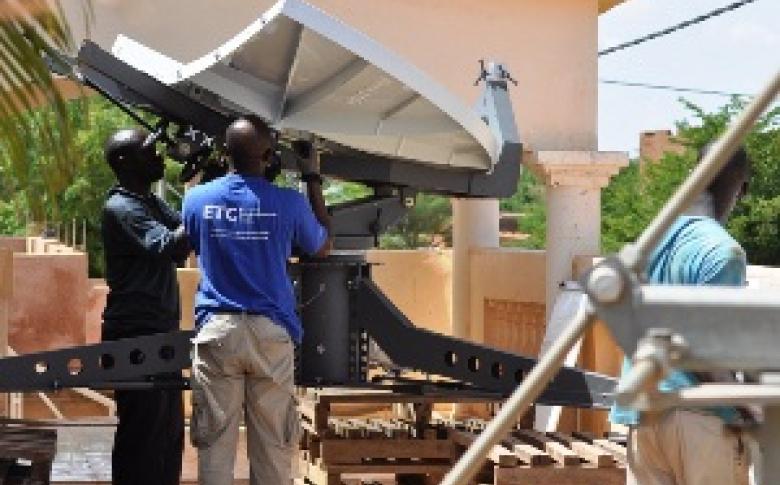
Connecting Humanitarians in Mali

The shifting sands of the Sahara, the legendary isolation and riches of Timbuktu, the haunting music of its tribespeople: Mali has long had a tranquil, semi-mystical reputation.
But on 21st March 2012, the peace was shattered as a coup d’état triggered a regional humanitarian crisis. Rebels in the north declared their independence, slicing the country in two. In the following seven months, almost 400,000 people were displaced, 70 percent of whom are now refugees in neighbouring Mauritania, Niger and Burkina Faso. Food price rises compound an already severe hunger problem while floods, disease and malnutrition ravage the population.
The Emergency Telecommunications Cluster (ETC) was activated on April 4th to provide internet connectivity, radio and telephone services to the humanitarian community responding to the crisis.
The challenges were daunting. An initial ETC assessment revealed major gaps in security telecommunications as VHF infrastructure had been compromised and was being used by non-humanitarian groups.
“The reality on the ground,” says Ozdzan Hadziemin, the ETC Coordinator deployed in May to manage the response, “was that there were no radio frequencies, we had to build the COMCENs (Communication Centres) pretty much from scratch and the local ISP (Internet Service Provider) in Mopti was unreliable.”
Despite the obstacles, the ETC, led by the World Food Programme (WFP), responded rapidly. Within two weeks, new radio frequencies had been obtained from the government and codeplugs were quickly standardized. By the end of October, over 450 handheld and 50 vehicle radios had been reprogrammed, allowing the humanitarian community to communicate without being overheard by non-humanitarian groups. Radio training was also delivered to 180 relief staff, radio operators and drivers.
“The training and reprogramming has made a huge difference,” says Sylvain Tiako, an IT Specialist from WFP Fast IT and Telecommunications Emergency and Support Team (FITTEST).
“Vehicles are regularly reporting to the United Nations Department of Safety and Security (UNDSS), which means they can be tracked. Everyone is following procedure and radio coverage is a lot better. It’s really increased safety.”

Mopti has also become a proving ground for the ETC response solution. Pioneered in South Sudan earlier this year, the solution, which has been jointly developed by the Directorate for Development Cooperation in Luxembourg, Ericsson Response and WFP, was deployed in Mopti by mid-July. The solution is now providing data connectivity and voice telephony services at no charge to organizations on the ground, enabling them to coordinate their relief efforts, locally and internationally.
Both Irish Aid and the Norwegian Refugee Council (NRC) have sent technicians to support ETC operations on the ground while the regular working group meetings welcomes representatives from every humanitarian organization in the country. At one point, a local company in Mopti got involved, heading up a tower installation, and in Bamako the ETC engaged numerous local firms to extend a tower at the UNDSS building and improve radio coverage.
According to Sylvain, it’s this collaboration that achieves results.
“One thing I really appreciate is the teamwork,” says Sylvain. “When you arrive you don’t know what the challenges are going to be. But it took me less than a day to get a clear view of the situation. It’s just how we do it.”